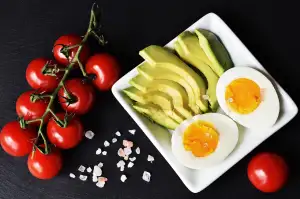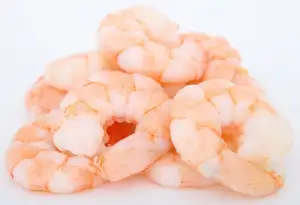Deliciously Authentic Cornish Pasty Recipe: A Taste of Cornwall's Finest Pastry

The Cornish pasty is a beloved pastry that hails from the rugged and picturesque region of Cornwall in southwest England. With its golden, flaky crust and savory filling, the Cornish pasty has become an iconic dish, cherished by locals and visitors alike. This delectable treat is not only a delicious meal but also a symbol of Cornwall's rich culinary heritage. Join us on a journey as we explore the history, ingredients, and techniques behind this mouthwatering creation. Get ready to savor a taste of Cornwall's finest pastry!
History and Origin of Cornish Pasty
The Cornish pasty holds a rich history and is deeply rooted in the culture of Cornwall, a county located in southwest England. Its origin can be traced back to the 13th century when it was commonly enjoyed by tin miners. The pasty was not only a convenient and portable meal for these workers but also served as a complete and nourishing lunch.
Legend has it that the distinctive shape of the Cornish pasty, with its crimped edge, originated from the miners' need for a hearty meal that could withstand their harsh working conditions. The thick crimped crust acted as a handle, allowing them to eat the pasty without dirtying their hands, while also serving as a practical way to differentiate between savory and sweet fillings.
Initially, the traditional filling for Cornish pasties consisted of beef, potatoes, onions, and swede (also known as rutabaga). These ingredients were readily available and provided a balanced combination of flavors. Over time, variations emerged with different regions adding their own twist to the recipe. Some included additional vegetables such as carrots or turnips, while others experimented with different types of meat like lamb or chicken.
The popularity of Cornish pasties grew beyond the mining community and spread throughout Cornwall. By the 18th century, they had become an iconic symbol of the region's culinary heritage. Today, Cornish pasties are recognized as one of England's most beloved dishes and have even been granted Protected Geographical Indication (PGI) status by the European Union to ensure their authenticity.
The history and tradition behind Cornish pasties make them more than just a delicious pastry; they represent a connection to Cornwall's heritage and are cherished by locals and visitors alike.
Traditional Ingredients for Cornish Pasty
The traditional Cornish pasty is known for its simple yet flavorful ingredients. The key components include beef, potatoes, onions, and swede (also known as rutabaga). These ingredients are wrapped in a buttery pastry crust that is both flaky and sturdy enough to hold the filling.
The beef used in a Cornish pasty is typically skirt or chuck steak, which is diced into small pieces. This tender meat adds richness and depth of flavor to the filling. Potatoes are an essential ingredient, providing substance and texture to the pasty. They are usually cut into small cubes, ensuring even cooking throughout.
Onions add sweetness and aroma to the filling, while swede contributes a slightly earthy and nutty taste. The combination of these vegetables creates a harmonious balance of flavors within the pasty.
To enhance the seasoning, salt and pepper are commonly used. Some variations may also include a sprinkle of dried herbs such as thyme or rosemary for added fragrance.
The traditional recipe does not call for any additional liquid or sauce in the filling. Instead, it relies on the natural juices released from the ingredients during baking to create a moist and succulent interior.
These classic ingredients have stood the test of time, making Cornish pasties a beloved culinary tradition in Cornwall and beyond.
Step-by-Step Recipe for Cornish Pasty
1. Start by making the pastry dough. In a large bowl, combine 2 cups of all-purpose flour and a pinch of salt. Add ½ cup of cold unsalted butter, cut into small cubes. Rub the butter into the flour until the mixture resembles breadcrumbs.
2. Gradually add ice-cold water, a tablespoon at a time, mixing with a fork until the dough comes together. Knead lightly until smooth. Wrap in plastic wrap and refrigerate for 30 minutes.
3. Meanwhile, prepare the filling. In a separate bowl, combine 1 lb of diced beef (preferably skirt or chuck), 1 diced onion, 2 diced potatoes, and 1 diced carrot. Season with salt and pepper to taste.
4. Roll out the chilled pastry dough on a floured surface to about ¼ inch thickness. Cut out circles about 8 inches in diameter.
5. Place a generous amount of filling on one half of each pastry circle, leaving a border around the edges.
6. Brush the edges with beaten egg and fold over the other half to enclose the filling. Press down firmly to seal and crimp the edges using your fingers or a fork.
7. Transfer the pasties onto a baking sheet lined with parchment paper. Brush each pasty with beaten egg for a golden finish.
8. Bake in a preheated oven at 400°F (200°C) for about 40-45 minutes or until golden brown and cooked through.
9. Remove from the oven and let them cool slightly before serving.
Enjoy these deliciously authentic Cornish pasties as a hearty meal or snack!
Variations and Regional Adaptations of Cornish Pasty
While the traditional Cornish pasty recipe remains popular, there are also several regional adaptations and variations that have emerged over time. These adaptations often reflect the local ingredients and culinary traditions of different areas in Cornwall.
One popular variation is the cheese and onion pasty, which adds a savory twist to the traditional recipe. The addition of grated cheese and sautéed onions gives the pasty a rich and flavorful filling that pairs perfectly with the flaky pastry.
In some coastal regions, seafood lovers can indulge in a delicious seafood pasty. This variation includes a combination of fresh fish, shrimp, or crabmeat mixed with vegetables like potatoes and onions. The result is a mouthwatering pasty that showcases Cornwall's bountiful seafood offerings.
For those seeking a vegetarian option, there are also vegetable-only pasties available. These typically include a medley of seasonal vegetables such as carrots, peas, swede, and leeks. The flavors meld together beautifully when encased in the buttery pastry crust.
In recent years, creative chefs have even experimented with sweet variations of the Cornish pasty. These sweet pasties often feature fillings like apples, berries, or even chocolate. They make for a delightful dessert or afternoon treat.
Each region within Cornwall may have its own unique take on the traditional pasty recipe. Some areas may incorporate additional spices or herbs into their fillings to add an extra layer of flavor. Others may use different types of meat such as lamb or chicken instead of beef.
Exploring these regional adaptations allows you to experience the diverse flavors that Cornwall has to offer while still enjoying the comforting familiarity of a classic Cornish pasty.
Remember to be open-minded and adventurous when trying these variations - you never know what new taste sensations you might discover!
Serving Suggestions and Pairings for Cornish Pasty
The Cornish Pasty is a versatile dish that can be enjoyed in various ways. Traditionally, it is served hot as a main course, accompanied by a side of pickled onions or a fresh green salad. The flaky pastry and savory filling make it a satisfying meal on its own.
For a more substantial meal, consider serving the Cornish Pasty with creamy mashed potatoes and steamed vegetables. The combination of flavors and textures will create a truly comforting experience.
If you're looking to elevate your dining experience, pair the Cornish Pasty with a rich red wine such as Cabernet Sauvignon or Merlot. The bold flavors of the wine will complement the hearty meat and vegetable filling.
For a lighter option, serve the Cornish Pasty with a crisp and refreshing cider. The sweetness of the cider will contrast beautifully with the savory pastry.
If you're hosting a gathering or party, consider serving mini-sized pasties as appetizers. These bite-sized treats are perfect finger foods that will surely impress your guests.
No matter how you choose to serve it, the Cornish Pasty is sure to delight your taste buds and transport you to the beautiful region of Cornwall. Enjoy this delicious pastry and savor every bite!
Tips and Tricks for Making the Perfect Cornish Pasty
1. Use cold ingredients: Make sure all your ingredients, including the butter and water, are chilled. This will help create a flaky pastry crust.
2. Don't overwork the dough: Mix the dough just until it comes together. Overworking the dough can result in a tough crust.
3. Roll out the pastry evenly: Roll out the pastry to an even thickness of about 1/8 inch. This will ensure that the pasty cooks evenly.
4. Seal the edges properly: Use a fork or your fingers to crimp and seal the edges of the pasty tightly. This will prevent any filling from leaking out during baking.
5. Ventilation is key: Cut a small slit or poke a few holes on top of each pasty to allow steam to escape while baking. This will prevent them from becoming soggy.
6. Brush with egg wash: Before baking, brush each pasty with beaten egg to give them a beautiful golden color and shiny finish.
7. Bake at high temperature: Preheat your oven to 425°F (220°C) and bake the pasties for about 40-45 minutes, or until they are golden brown and crispy.
8. Let them cool slightly before serving: Allow the pasties to cool for a few minutes before digging in. This will help set the filling and make them easier to handle.
By following these tips and tricks, you'll be able to create deliciously authentic Cornish pasties that are sure to impress!
In conclusion, the Cornish Pasty is a true culinary delight that embodies the rich history and flavors of Cornwall. Its humble origins as a portable meal for miners have transformed it into a beloved dish enjoyed by people all over the world.
With its flaky pastry crust and hearty filling, the Cornish Pasty is a satisfying meal on its own. Whether you choose to enjoy it hot or cold, it never fails to deliver a burst of delicious flavors.
So why not treat yourself to this authentic taste of Cornwall? Gather your ingredients, follow our step-by-step recipe, and indulge in the pleasure of making your very own Cornish Pasty. Whether you're enjoying it as a quick lunch or serving it at a dinner party, this iconic pastry is sure to impress.
Pair your Cornish Pasty with some tangy piccalilli or a dollop of creamy mustard for an extra kick of flavor. And don't forget to serve it alongside a fresh green salad or some steamed vegetables to complete the meal.
Remember, practice makes perfect when it comes to making the perfect Cornish Pasty. Don't be discouraged if your first attempt isn't flawless – keep honing your skills and experimenting with different fillings and techniques.
So go ahead, embrace the tradition and savor every bite of this delectable pastry. The Cornish Pasty truly is a taste of Cornwall's finest – enjoy!
Published: 24. 01. 2024
Category: Recipes



